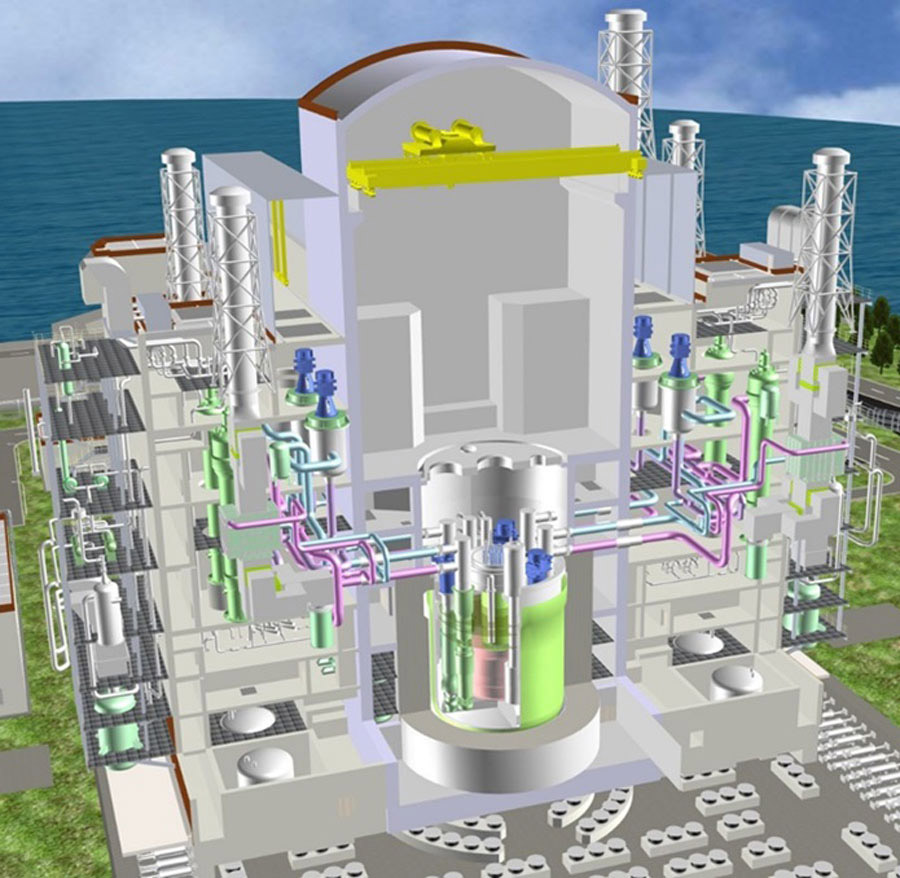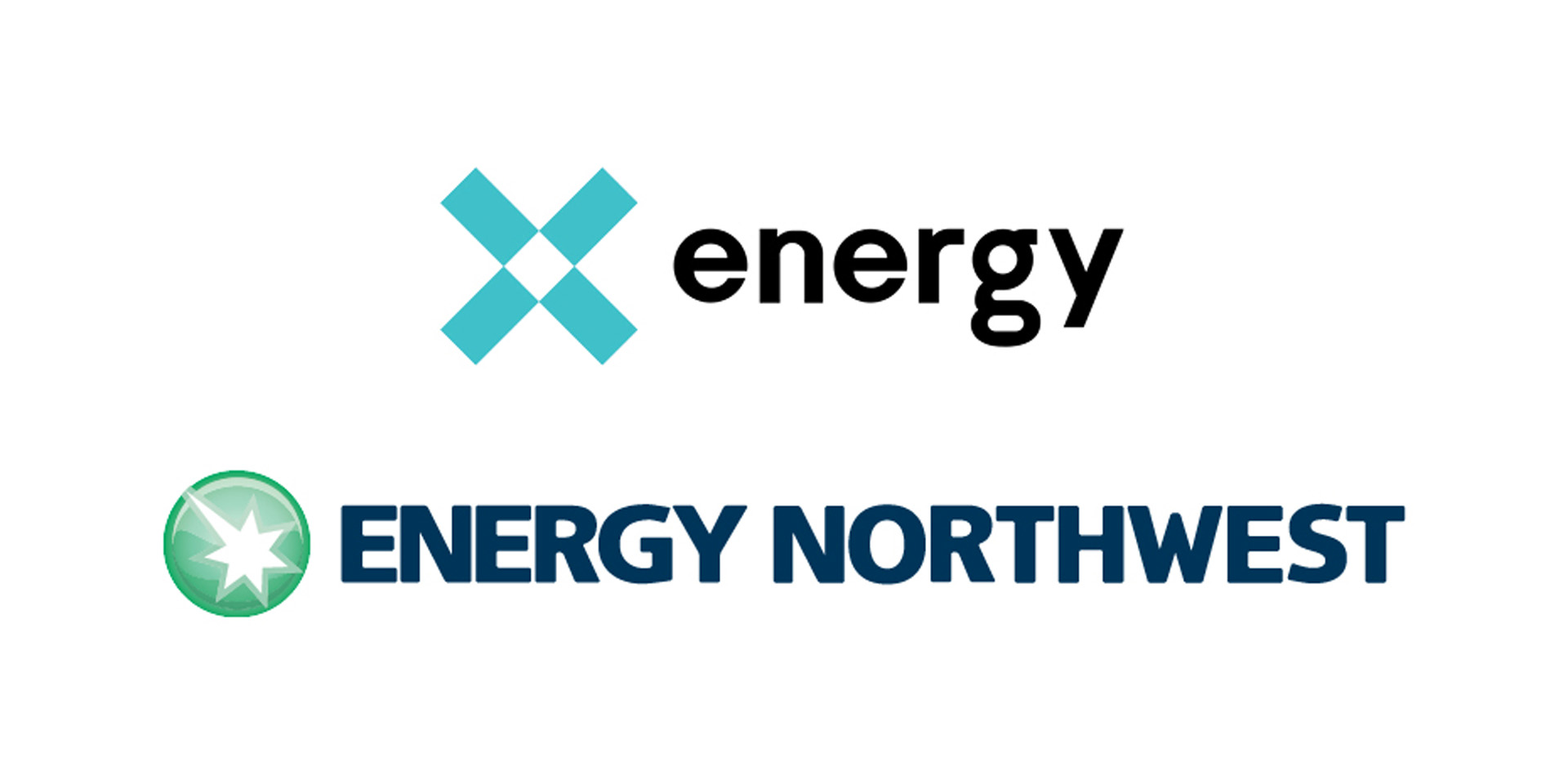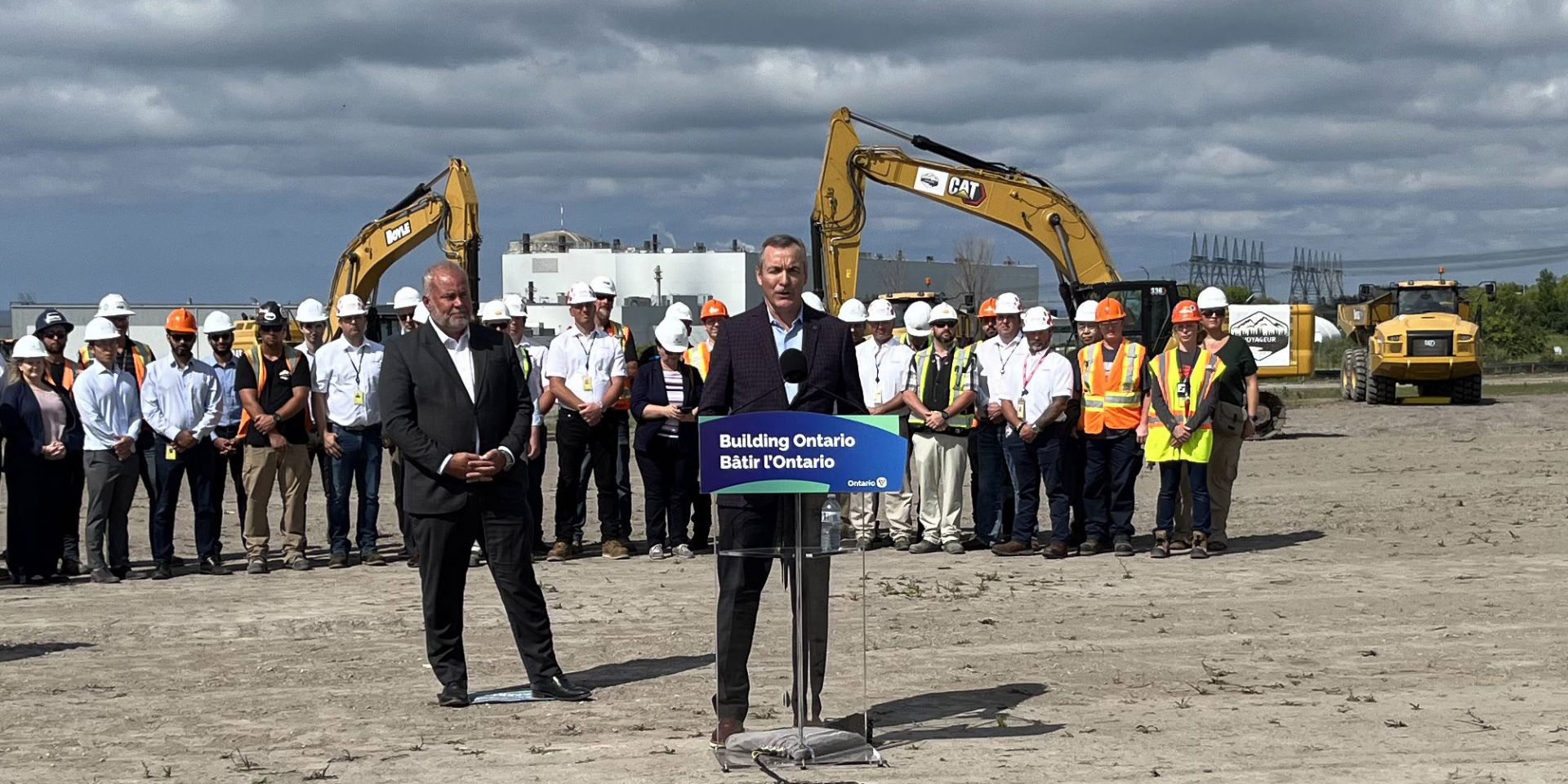Kairos applies for permit to build two-unit Hermes plant

Kairos Power has filed a construction permit application with the Nuclear Regulatory Commission for a two-unit version of its Hermes advanced test reactor.


Kairos Power has filed a construction permit application with the Nuclear Regulatory Commission for a two-unit version of its Hermes advanced test reactor.
The Department of Energy is holding an initial Industry Day on July 28 that is open to parties with proven experience in implementing successful clean electricity projects generating 200 MW or larger.

Concept art of a tank type sodium-cooled fast reactor. (Image: MHI)
The Japanese government has chosen Mitsubishi Heavy Industries (MHI) to head up the conceptual design and research and development of a demonstration sodium-cooled fast reactor, the Tokyo-based engineering firm announced recently.
MHI is to oversee the work in partnership with Mitsubishi FBR Systems Inc. (MFBR), an MHI Group engineering company established in 2007 to develop and design fast breeder reactors.
Conceptual design work is scheduled to commence in fiscal year 2024, with operation of the unit slated for the 2040s.
Reactor roadmap: According to MHI’s announcement, in the strategic roadmap for fast-reactor development adopted by the Japanese Cabinet in December 2018, a policy was defined to assess the efficacy of several types of technologies to be developed following a competition among private-sector companies. The roadmap was subsequently revised by the Cabinet in December 2022, at which time two decisions were made: (1) to select a sodium-cooled fast reactor as the target of the conceptual design of the demonstration unit and (2) to select a manufacturer to serve as the core company in charge of the reactor’s design and requisite R&D.

Southern Nuclear, operator of Georgia’s Vogtle plant, has informed the Nuclear Regulatory Commission that all 364 inspections, tests, and analyses for Unit 4 have been performed, and all acceptance criteria for the new reactor have been met. Primary plant owner Georgia Power made the announcement last Friday.

Ontario Power Generation has achieved another milestone in its massive Darlington nuclear plant refurbishment project, and in rather impressive fashion: The Unit 3 CANDU reactor has been reconnected to Ontario’s electricity grid 169 days ahead of schedule, according to a July 18 OPG media release.

Energy Harbor has filed its initial license renewal application for the Perry nuclear power plant, requesting an additional 20 years of operation for the facility, the Nuclear Regulatory Commission announced yesterday. Dated July 3, the 2,427-page application is now available on the agency’s website.
Probabilistic risk assessment is a mature technology that has benefited the safety of the current fleet of light water reactors in the United States since the 1970s. Most utilities have used PRA models as part of risk-informed in-service inspection programs to identify degraded plant conditions for more than two decades. The trends indicate an increasing use of risk-informed applications to support safe and cost-effective long-term operations.
Data science and predictive analytics innovations offer the opportunity to assess, monitor, and manage risk effectively. PRA models are coupled with digital twins informed by sensors and system simulators that provide real-time risk insights. Dynamic PRA approaches were initially introduced to beyond-design-basis event models for LWRs and explicitly model time-dependent operator behavior by simulating the actual plant response. Enhancing the quantification speed and memory usage of the PRA computational tools (both dynamic and traditional) is crucial for future risk-informed efforts.

Small modular reactor firm X-energy and Energy Northwest, owner and operator of the Columbia nuclear power plant in Richland, Wash., announced yesterday the signing of a joint development agreement (JDA) for up to 12 Xe-100 SMRs in central Washington, capable of generating up to a total of 960 MWe.
The JDA defines and details the scope, location, and schedule under which the commercial development of the project will move forward, the companies said, adding that they will also work together to determine the best approaches to licensing and regulatory matters, as well as the project delivery model. Currently, the Xe-100 project is expected to be developed at a site adjacent to the Columbia facility, with the first module coming on line by 2030.

Westinghouse Electric Company yesterday announced the signing of two memorandums of understanding with Slovakia’s state-owned nuclear company JAVYS regarding the potential deployment of the U.S. firm’s AP1000 reactors and AP300 small modular reactors.
Tennessee Gov. Bill Lee has announced appointments to his Tennessee Nuclear Energy Advisory Council, established recently via executive order to help position the Volunteer State as a national leader in nuclear innovation.
The European Union agreed in July 2022 to include nuclear power in its taxonomy of environmentally sustainable economic activities. Yet as Columbia University senior research scholar Matt Bowen and research assistant Kat Guanio note in commentary published July 6 by Columbia University’s Center on Global Energy Policy, that policy decision remains “a bit of an outlier.” Despite nuclear energy’s anticipated role in achieving decarbonization, many climate finance taxonomies either explicitly exclude nuclear power or are discouragingly ambiguous.

As nuclear power plants in the United States and around the world go through license renewals to operate for up to 60 and 80 years and beyond, aging management of electrical cables takes center stage. Each nuclear power plant unit has thousands of miles of cables, many of which are critical to plant safety and reliability. The most important cables—those in safety systems or safety-related applications—are qualified according to industry standards and guidance documents for nuclear applications. These qualification methods use accelerated aging to simulate cable degradation under natural aging conditions and then subject the cable to a design-basis event simulation to establish the cable’s “qualified life.” This approach has worked well for the length of the initial plant license, but now, many cables are approaching or already are past their 40-year qualified lifespan. With license renewals allowing plants to operate beyond their original design life, the industry has undertaken a variety of research endeavors to help assess the condition of cables as they age and develop in situ testing techniques to verify that cables can continue to operate safely and reliably. For example, in 2022, we completed a multiyear project to develop aging acceptance criteria for a wide variety of condition monitoring techniques that can objectively assess the aged condition of cables while they remain installed in nuclear plants.

Jamie Coble
The nuclear power industry has the opportunity for significant advancements in the coming years, driven by the digital integration of instrumentation and controls (I&C), machine learning (ML), artificial intelligence (AI), and optimized operations and maintenance (O&M) technologies. These developments are the enabling technologies that can ensure the efficiency, safety, and reliability of our future fleet of nuclear power plants, propelling the industry toward a more sustainable and intelligent future.
I&C plays a vital role in monitoring and controlling various aspects of nuclear power plants. Traditional I&C systems have relied on hardwired control circuits, but modern advancements are shifting towards digital I&C systems, also known as digital control systems (DCS). These systems offer enhanced flexibility, scalability, and reliability. They utilize advanced sensors, data acquisition systems, and distributed control algorithms to enable real-time monitoring, fault detection, and control optimization.

The energy ministries of Bulgaria and Ukraine have announced the signing of a memorandum of understanding to expand collaboration in the energy sector, including the nuclear energy sector.
There are two open positions on the Nuclear Regulatory Commission’s Advisory Committee on Reactor Safeguards (ACRS). To fill these positions, the NRC is looking for candidates who have extensive experience in nuclear reactor safety issues—especially in the engineering and safety aspects of new light water and non–light water reactor designs and technologies, or in similar areas of nuclear reactor and fuel cycle safety.

If we’re in a new nuclear renaissance, its capital would appear to be Ontario. On July 7, just two days after debuting a collaboration with Bruce Power to build up to 4.8 GW of new nuclear generation at the Bruce plant, the government of Ontario announced that it is working with Ontario Power Generation to begin planning and licensing for the deployment of three additional GE Hitachi Nuclear Energy (GEH) BWRX-300 small modular reactors at that utility’s Darlington site.

“It is critical after the Hamaoka Nuclear Power Station restart that we reduce our cost and increase our capacity factor while becoming more economically competitive.” Ichiro Ihara, chief nuclear officer of Chubu Electric Power, made this observation recently when the Electric Power Research Institute visited the Japanese nuclear power plant for a strategy development session for plant modernization. EPRI’s team of five specialists spent four days at Hamaoka to investigate the feasibility of potential improvements—the third step of the EPRI modernization strategy planning process. It was a trip six months in the making—and the first time EPRI has applied its nuclear plant modernization process outside the United States.

The government of Ontario announced Wednesday that it is starting predevelopment work with Bruce Power—operator of the eight-unit Bruce nuclear plant—to site the first large-scale nuclear build in Canada in more than thirty years.
International Atomic Energy Agency experts at Ukraine’s Russian-occupied Zaporizhzhia nuclear power plant have so far been unable to verify recent claims by Ukrainian president Volodymyr Zelenskyy that Russia may have planted explosives at the site to “simulate an attack.”

Consulting company TVO Nuclear Services (TVONS), a subsidiary of Teollisuuden Voima Oyj, owner and operator of Finland’s three-unit Olkiluoto nuclear plant, has signed a memorandum of understanding with Norsk Kjernekraft, aka Norwegian Nuclear, a firm established last July with the goal of bringing small modular reactors to power reactor–deprived Norway.
A June 27 announcement from TVO said the new MOU provides the Norwegian firm with “access to the know-how and experience of one of the world’s best-known nuclear power companies” and stressed TVO’s 60 percent ownership of Posiva, the company responsible for the disposal of Finland’s spent nuclear fuel. “Posiva has successfully built the world’s first final disposal facility for high-level nuclear waste,” TVO stated. “This is decisively important for Norwegian Nuclear’s plans for the management of the entire life cycle of nuclear power.”